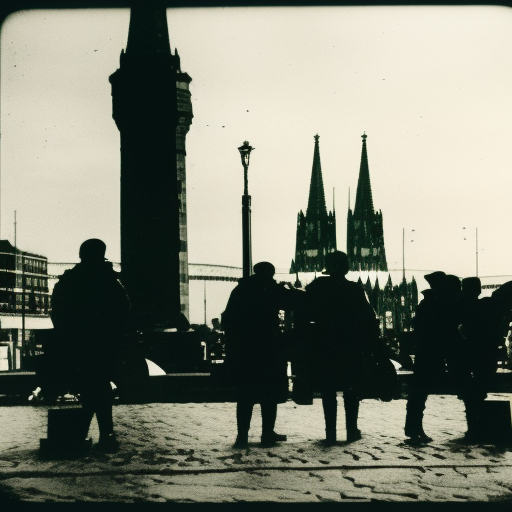Cologne War: A Struggle for Power and Religion
The Cologne War, also known as the War of the Bishops, was a conflict that took place in the 16th century in the city of Cologne, Germany. It was a struggle for power and religion between the Catholic and Protestant factions, with significant political and religious implications for the region.
Background:
During the Reformation, the religious landscape in Europe was undergoing significant changes. Martin Luther’s ideas had gained traction, leading to the rise of Protestantism. In Cologne, the archbishopric was a powerful position that held both religious and political authority. The archbishop, Hermann V von Wied, was sympathetic to the Protestant cause, which created tension with the Catholic majority in the city.
Religious Tensions:
The religious tensions in Cologne came to a head when Archbishop Hermann V declared his conversion to Protestantism in 1542. This move was met with resistance from the Catholic clergy and the city’s population, who remained loyal to Catholicism. The archbishop’s decision sparked a conflict between the Catholic and Protestant factions, setting the stage for the Cologne War.
Course of the War:
The war began in 1583 when a group of Protestant nobles, known as the “Gebhard Truchsess von Waldburg,” supported by Protestant forces from neighboring territories, attempted to seize control of the city. Their goal was to establish a Protestant ruler in Cologne and further the spread of Protestantism in the region.
The Catholic forces, led by Ernest of Bavaria, the brother of the Duke of Bavaria, fought back against the Protestant uprising. The conflict quickly escalated into a full-scale war, with both sides engaging in sieges, battles, and raids. The fighting lasted for several years, causing significant damage to the city and its surrounding areas.
Foreign Intervention:
The Cologne War attracted the attention of external powers, who saw an opportunity to advance their own interests in the region. The Protestant forces received support from Protestant territories such as the Dutch Republic and England, while the Catholic forces were backed by the Catholic League and the Spanish Empire.
The involvement of foreign powers further complicated the conflict, turning it into a proxy war between Catholic and Protestant forces. The war also took on a broader geopolitical dimension, reflecting the larger struggle for dominance between Catholic and Protestant powers in Europe.
Resolution:
After years of fighting, the war came to an end in 1589 with the defeat of the Protestant forces. The Catholic faction, led by Ernest of Bavaria, regained control of the city and reinstated Catholicism as the dominant religion in Cologne. Archbishop Hermann V was deposed and replaced by a Catholic archbishop, restoring the Catholic hierarchy in the city.
The Cologne War had significant consequences for the religious and political landscape of the region. It solidified Catholic control over Cologne and halted the spread of Protestantism in the area. The war also highlighted the deep divisions between Catholics and Protestants, further fueling religious tensions in Germany and beyond.
Legacy:
The Cologne War served as a precursor to the larger conflicts that would engulf Europe in the following decades, such as the Thirty Years’ War. It demonstrated the extent to which religious differences could lead to violent conflicts and highlighted the complex interplay between religion, politics, and power in the early modern period.
In conclusion, the Cologne War was a significant conflict in 16th-century Germany that pitted Catholic and Protestant factions against each other. It was a struggle for power and religion, with far-reaching consequences for the region. The war ended with the Catholic victory, reinforcing Catholic control over Cologne and marking a setback for the Protestant cause.












